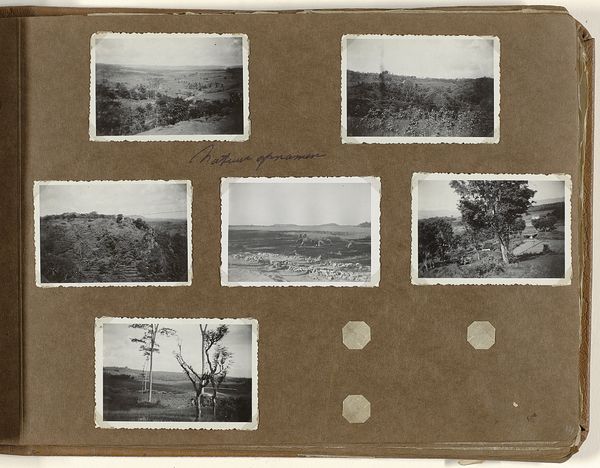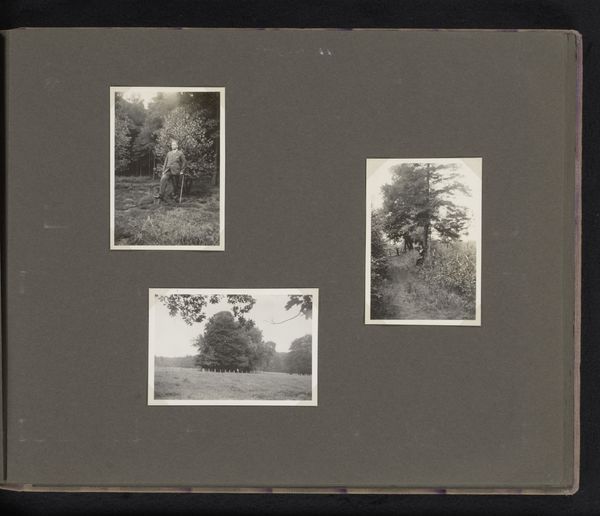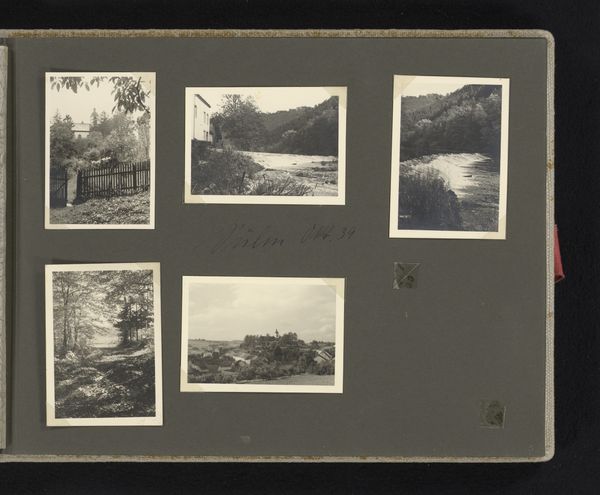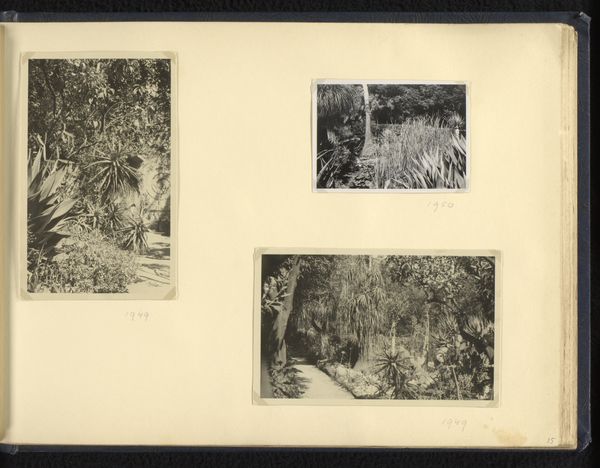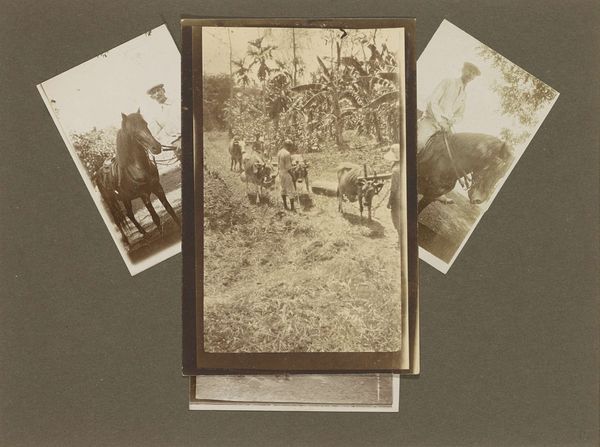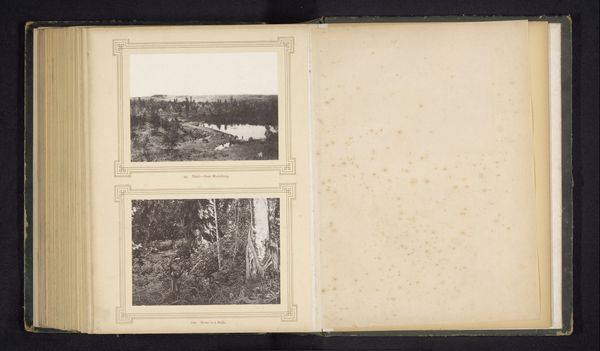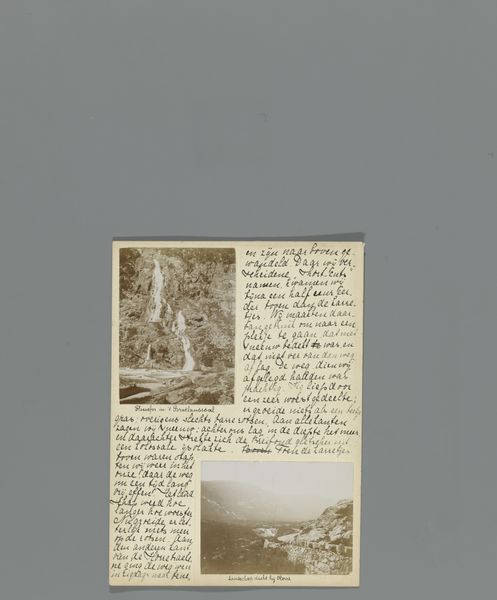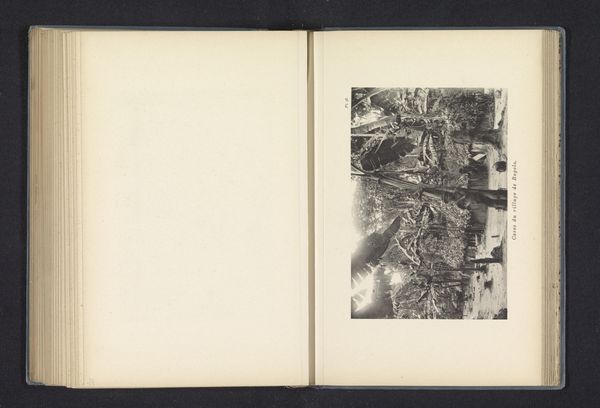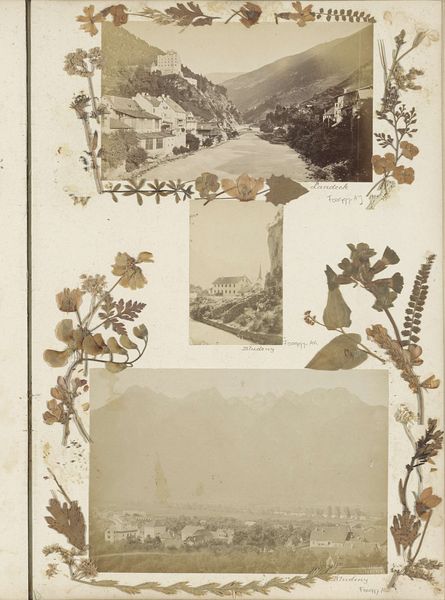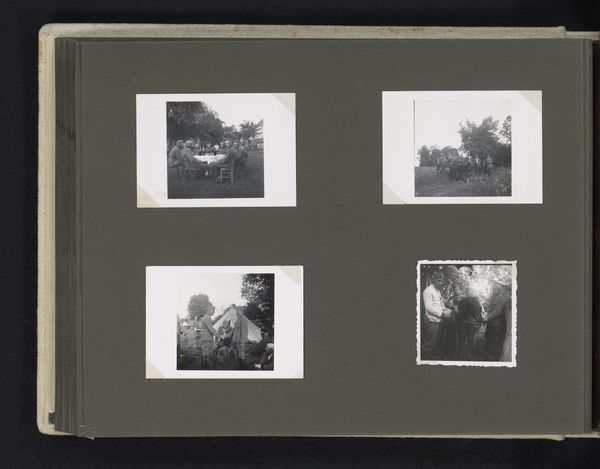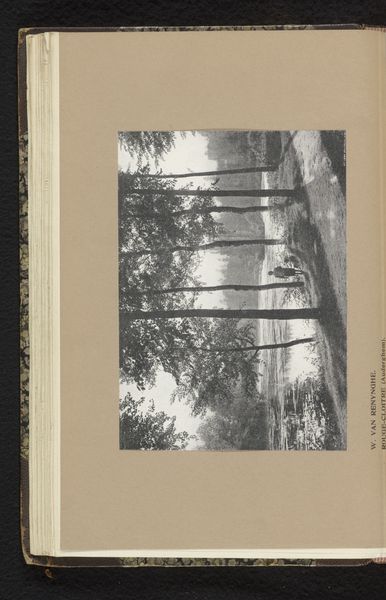
photography, gelatin-silver-print
#
landscape
#
photography
#
gelatin-silver-print
#
cityscape
#
realism
Dimensions: height 75 mm, width 125 mm, height 148 mm, width 200 mm
Copyright: Rijks Museum: Open Domain
Editor: So, here we have an anonymous gelatin-silver print, a photograph called "Albina en riviergezicht," dating from somewhere between 1925 and 1935. It’s a pairing of river landscapes and feels very…quiet. What do you see in this piece? Curator: What I see is a constructed vision of the “untouched” landscape juxtaposed with colonial settlement. The romantic wilderness depicted in the upper image and the domesticated cityscape below perform the colonial fantasy. Think about what it meant to construct a photographic archive like this in that era. Whose gaze is centered? Editor: I guess I hadn’t thought about the relationship between the two images that way. You mean that one is showing an “authentic” landscape versus civilization imposing itself on the land? Curator: Precisely. Consider the historical context. The very act of photographing and archiving these scenes reflects a power dynamic, of cataloging and controlling both the land and its representation. How might indigenous communities have viewed this "peaceful" scene, knowing its implications? Editor: It's making me think about how these idyllic images might have been used to justify colonial expansion. What do you mean about whose gaze? Curator: It prompts us to interrogate whose perspective is privileged here? Whose stories are being told, and whose are being erased in favor of an artificially constructed ideal of nature and progress. And even beyond, consider what elements are valued in this colonial period by those who have the ability to travel and photograph. Editor: I hadn’t really considered the active role of the photographer in shaping our understanding. Curator: Exactly. It’s a reminder that art isn't created in a vacuum. Understanding the sociopolitical climate helps us unravel deeper meanings embedded within these images. Editor: Thanks for that. I'm going to look at photography a bit differently now.
Comments
No comments
Be the first to comment and join the conversation on the ultimate creative platform.
